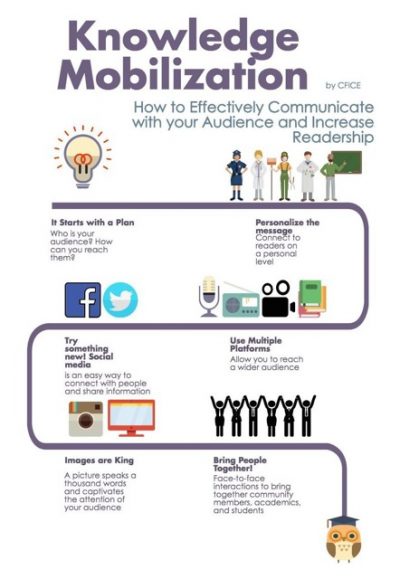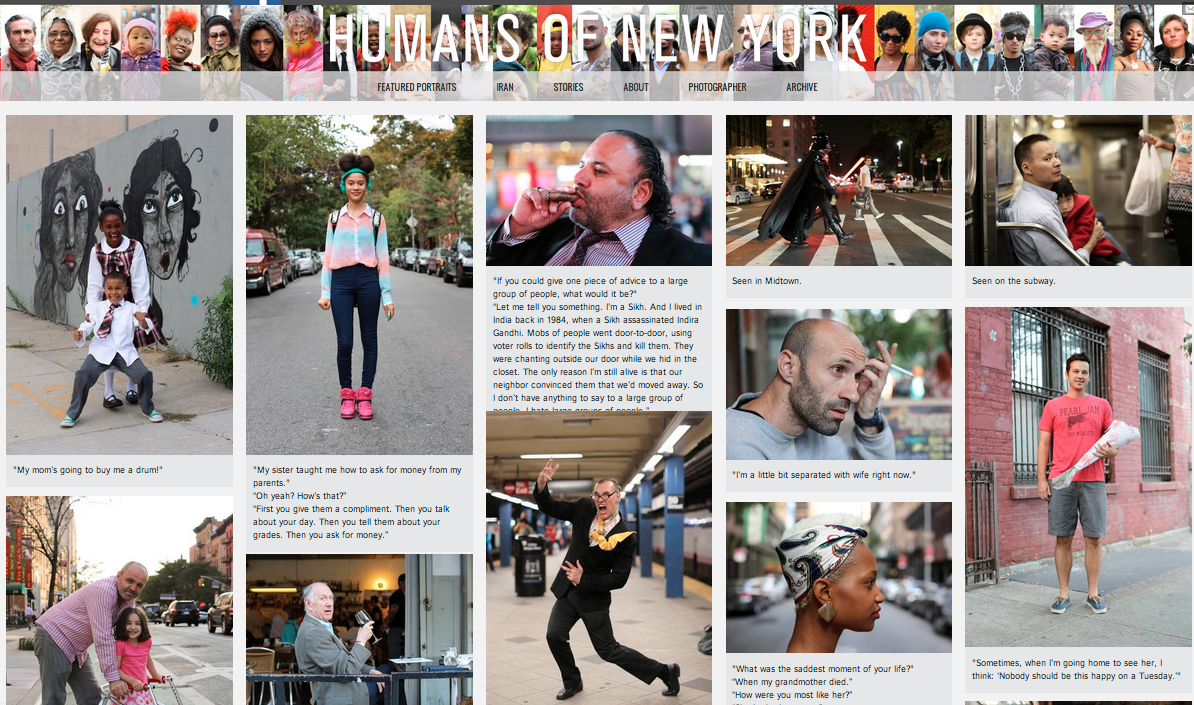by Carly Foubert, CFICE Communications RA
 Within the realm of academia, knowledge mobilization is considered an essential aspect of research, especially in the humanities and social sciences. Universities tap into many knowledge mobilization tips and tricks to access a broader audience and make information regarding programs, events, and the achievements of faculty and students publicly accessible.
Within the realm of academia, knowledge mobilization is considered an essential aspect of research, especially in the humanities and social sciences. Universities tap into many knowledge mobilization tips and tricks to access a broader audience and make information regarding programs, events, and the achievements of faculty and students publicly accessible.
Although knowledge mobilization, particularly via social media, can, and has been, a hotly debated practice, CFICE is here to shed some light on some of the top knowledge mobilization trends that universities are tapping into this academic year.
1. Personalizing the message
Personalizing the message is about being human-centred in your knowledge mobilization efforts. This means connecting to readers on a personal level by relating research to human experiences.
Personalizing your research can mean using narrative and story-telling techniques to convey information about your subject. It can mean conveying research information through stories about the people who conduct the research. It can also mean explaining complex research concepts through examples that your audience may have experienced. Using relatable examples or connecting researchers’ personal interests to the work that they do, humanizes the research and taps into our innate drive to understand each other.
A good example of “personalizing the message” can be seen in the Humans of New York project, and the global fixation in recent years with highlighting people and their untold stories. CFICE has even jumped on this trend with our Humans of CFICE series! As with CFICE’s series, personalizing, and sharing, these stories can be done through a number of mediums.
Podcasts and blogging are two alternative mediums to the classically written journal article. Podcasts are especially great as they allow for on-the-go learning and multitasking. But keep in mind that what is read one way, is not as easily spoken out loud and recorded; Different language, sentence structure, and terminology is required to best suit the easy and conversational nature of podcasts.
2. Using Multiple Mediums
 With so many options for how to share your research, it can be hard to decide which platform and format to use. The good news is: you don’t have to pick just one! Maximizing the number of ways readers can access your information and research, can potentially lead to a higher readership, and more importantly, more people who know about your research.
With so many options for how to share your research, it can be hard to decide which platform and format to use. The good news is: you don’t have to pick just one! Maximizing the number of ways readers can access your information and research, can potentially lead to a higher readership, and more importantly, more people who know about your research.
In order to maximize your exposure and increase your readership, you’ll have to start by asking yourself who your (desired) audience is. Once you know who you’re targeting, you’ll be able to find out where they like to get their information. For example, if your target audience is incoming university students, the best place to reach them might be on social media.
The possibilities are endless when it comes to mediums for knowledge mobilization. You’ve got written sources like books, journal articles, blogs, and pamphlets, and digital sources such as video, podcasts, and webinars to name but a few.
Remember, any knowledge that you share, regardless of the medium, should always be tailored and written according to the platform and intended audience. Your goal is to make knowledge accessible, so use appropriate language that is appropriate to the platform and your target audience.
3. Tapping into Social Media
 Nothing brings people together to share information like web 2.0—that is, social media. Social media is easily accessible and just about everyone who’s anyone is connected through this world of tweeting, texting, sharing, liking, and pinning. This makes it a great way to quickly share your research with a wide, and globally-diverse audience.
Nothing brings people together to share information like web 2.0—that is, social media. Social media is easily accessible and just about everyone who’s anyone is connected through this world of tweeting, texting, sharing, liking, and pinning. This makes it a great way to quickly share your research with a wide, and globally-diverse audience.
As we’ve seen with #blacklivesmatter #feelthebern #MMIWG, hashtags aid in the rapid spread of ideas by organizing information according to “trending labels”. Anyone who uses a hashtag will automatically have their tagged content show up in a mass feed that anyone can read.
Although we can argue about whether or not social media platforms are successful in encouraging social policy change, one thing’s for sure: social media is an easy way to share information that can empower social movements. It can also be a great way to network with other professionals in your field, potentially opening doors for future opportunities. The only caveat is that you have to get good at breaking down your research concepts into easily-digestible chunks of information!
4. Conveying Information via Images
 As the saying goes, “a picture speaks a thousand words,” and although it may sound cliche, it can be true–especially in the case of knowledge mobilization.
As the saying goes, “a picture speaks a thousand words,” and although it may sound cliche, it can be true–especially in the case of knowledge mobilization.
Science communicators have been considerably successful at mobilizing research knowledge, particularly through sites like ‘I F***ing Love Science’ and asapSCIENCE. Through these sites, scientists have identified that GIFs and short video clips can convey complex scientific concepts in ways that are popular amongst their desired audiences. Images and video clips catch the attention of viewers as they scroll through Facebook and other social media sites, which means a higher number of viewers will engage with, and potentially even share, the scientific concepts being mobilized.
Instagram and Snapchat are examples of visual platforms that have been successful for encouraging engagement with universities, researchers, and complex information. Some universities have even started using Instagram and Snapchat for recruiting new students, teaching and learning opportunities, and for keeping students informed of current events.
Infographics are yet another visual representation of data and information. They use imagery to organize key information into bite-sized pieces for an audience’s consumption. By providing only a snapshot of the content being displayed, infographics help give readers a general overview of a given topic while also enticing them to look further into the issue.
Want to create an infographic yourself? Here are a couple free and easy-to-use sites you can use:
5. Bringing Actual People Together

©Justin Tang Photo
Technology and social media have done wonders for connecting people together and mobilizing knowledge that would normally only be accessible to specific groups of people (like scientists), but there is nothing quite like face-to-face interactions to really facilitate learning and uptake of research information. Falling along the same lines as personalizing the message, in-person meetings build connections that are rooted in our human experiences of the world. Everyone likes to put a face to a name, so the next time you’re hoping to mobilize your research, think about hosting an event. Workshops, meetings, or even networking nights are some great examples of events that can bring together community members, academics, and students around a common topic or goal.
Seeing some knowledge mobilization trends we haven’t listed here? Let us know by leaving us a comment on this post!
